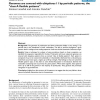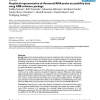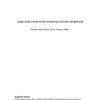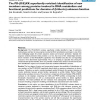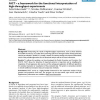BMCBI
2005
13 years 11 months ago
2005
Background: The genomes of prokaryotes and lower eukaryotes display a very strong 11 bp periodic bias in the distribution of their nucleotides. This bias is present throughout a g...
BMCBI
2005
13 years 11 months ago
2005
Background: Currently real time PCR is the most precise method by which to measure gene expression. The method generates a large amount of raw numerical data and processing may no...
BMCBI
2005
13 years 11 months ago
2005
Background: Computational biologists use Expectation values (E-values) to estimate the number of solutions that can be expected by chance during a database scan. Here we focus on ...
BMCBI
2005
13 years 11 months ago
2005
Background: Current protein clustering methods rely on either sequence or functional similarities between proteins, thereby limiting inferences to one of these areas. Results: Her...
BMCBI
2005
13 years 11 months ago
2005
Background: Taxon specific hybridization probes in combination with a variety of commonly used hybridization formats nowadays are standard tools in microbial identification. A fre...
BMCBI
2005
13 years 11 months ago
2005
BMCBI
2005
13 years 11 months ago
2005
Background: Wise et al. introduced a rank-based statistical technique for meta-analysis of genome scans, the Genome Scan Meta-Analysis (GSMA) method. Levinson et al. recently desc...
BMCBI
2005
13 years 11 months ago
2005
Background: Assignment of function to new molecular sequence data is an essential step in genomics projects. The usual process involves similarity searches of a given sequence aga...
BMCBI
2005
13 years 11 months ago
2005
Background: The PD-(D/E)XK nuclease superfamily, initially identified in type II restriction endonucleases and later in many enzymes involved in DNA recombination and repair, is o...
BMCBI
2005
13 years 11 months ago
2005
Background: Interpreting the results of high-throughput experiments, such as those obtained from DNA-microarrays, is an often time-consuming task due to the high number of data-po...
